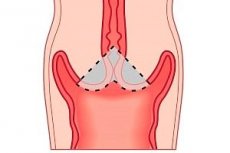Medical expert of the article
New publications
Cervical biopsy and histology for dysplasia
Last reviewed: 04.07.2025

All iLive content is medically reviewed or fact checked to ensure as much factual accuracy as possible.
We have strict sourcing guidelines and only link to reputable media sites, academic research institutions and, whenever possible, medically peer reviewed studies. Note that the numbers in parentheses ([1], [2], etc.) are clickable links to these studies.
If you feel that any of our content is inaccurate, out-of-date, or otherwise questionable, please select it and press Ctrl + Enter.

Biopsy - this word scares many women, although the procedure itself is not dangerous. Only its result can be alarming, which is not always bad. A biopsy of the cervix in case of dysplasia is rather intended to exclude the risk of developing oncology and is one of the most common procedures in a comprehensive examination of women.
Description of the procedure, how is a cervical biopsy performed for dysplasia?
- A biopsy is the removal of a small amount of epithelial tissue for examination.
- The procedure uses a very thin, specially designed needle with a cavity.
- The biopsy is performed during a colposcopic examination.
- The needle is inserted into the epithelial tissue after applying local anesthetic.
- The obtained biopsy (material) is sent to the laboratory for histological examination.
- The cellular material undergoes special processing (staining) and is examined under a microscope.
- Histology allows us to determine how dangerous cervical dysplasia is. The integrity of the cell structure, their morphology, and the number of tissue layers are assessed.
- The analysis allows us to determine the degree of damage to the epithelial tissue and clarify the preliminary diagnosis.
Biopsy is considered a highly informative method, the advantage of this procedure is that it is practically painless and is a minimally invasive examination method.
Histology in cervical dysplasia
Histological studies are included in the diagnostic complex if the gynecologist has detected cervical dysplasia in a woman during the initial examination. It is histology that makes it possible to clarify the diagnosis, exclude or confirm cancer, carcinoma.
Let's take a closer look at what histology is:
- Histology is a method that studies the structure of tissue and identifies all deviations in the cellular structure.
- The basis of histology is the study of a section of tissue material, in this case, the epithelium of the cervix.
- The difference between histology and cytology is that a biopsy involves taking a deeper sample. Cytology involves scraping the surface of the cervical epithelium.
- Histology is performed during a colposcopic examination. Most often after the primary colposcopy, which determines the site of biopsy sampling.
- Histological examination is not considered complicated, with the exception of cases where epithelial damage is not clearly expressed and several biopsies from different sectors of the cervix are required.
- The obtained biopsy is examined using staining. Normally, epithelial tissue shows a brown color after staining. If there are pathological changes, the color of the tissue changes slightly or the material does not change color at all.
- When performing histology, the cervical tissue is damaged, to avoid infection or bleeding, the area can be sutured. But most often after a biopsy, a sterile hemostatic tampon is used, which copes well with the function of protecting and regenerating tissue.
What methods can be used for histology?
- Standard biopsy using a special hollow needle.
- Excision of a small area of tissue using a special medical electric knife (diathermoexcision).
- Laser excision.
- Excision using the latest modern instrument - a radio knife.
- Taking tissue with a scalpel.
Recommendations for histological tissue sampling
- This is the least traumatic and suitable method for young, nulliparous women.
- If the suspected altered area of the epithelium is small, sampling is carried out in a gentle manner in any sector of the cervix.
- For histology, preliminary diagnostic procedures are required - examination, cytology, colposcopy.
Normal histology results do not exclude the need for regular examinations and diagnostics. Visiting a gynecologist at least once a year should be the norm for every sensible woman, since cervical dysplasia can develop asymptomatically and without characteristic signs.
What are the criteria for determining the diagnosis after a biopsy?
- If there are disturbances in the structure of the epithelial layers.
- When the outer layer shows cell maturation activity (increase in ribosomes).
- If a decrease in the synthesis of specific glycogen is determined.
- Cell contact (desmos) is reduced.
- The cell nucleus is subject to pathological changes.
- Visible atypical mitochondria and other abnormal components of the cell's DNA.
- Changes in cell shape (cylindrical).
Degree of damage to epithelial cells:
- The first are background changes, weakly expressed.
- Moderate, second degree – atypical changes are expressed in half of all layers.
- Severe atypia, third degree – changes affect two or more layers of the epithelium.


 [
[